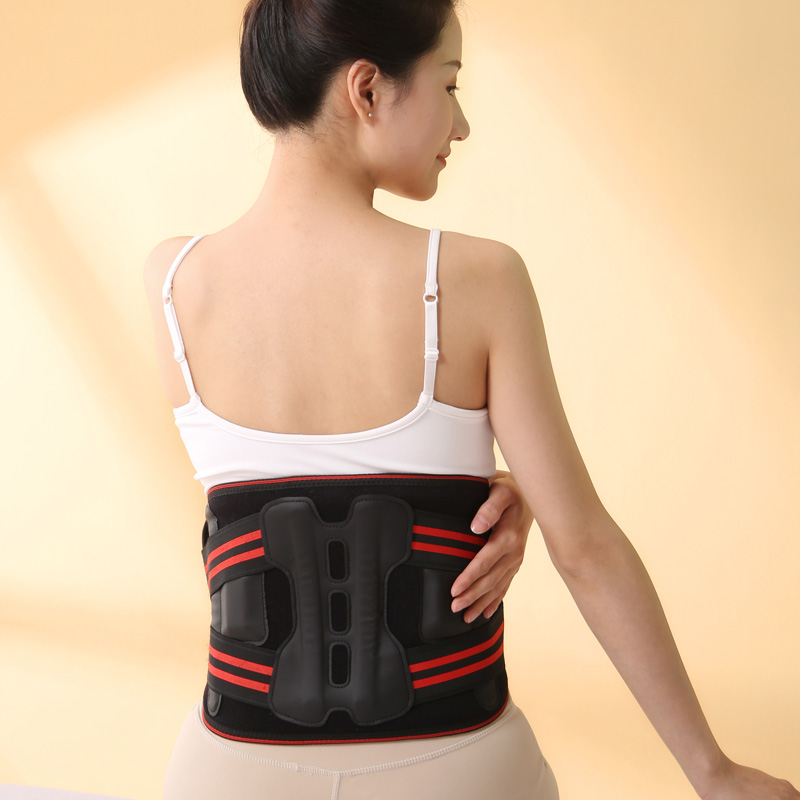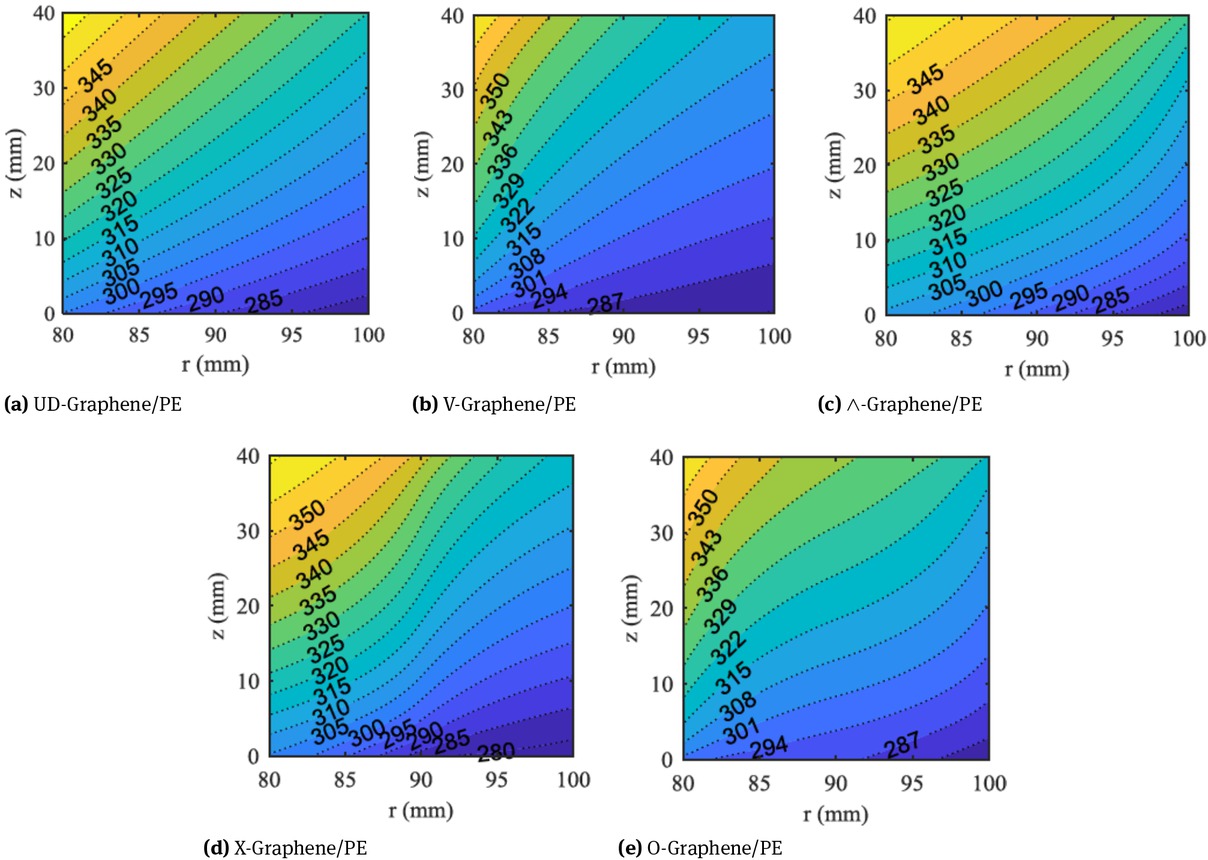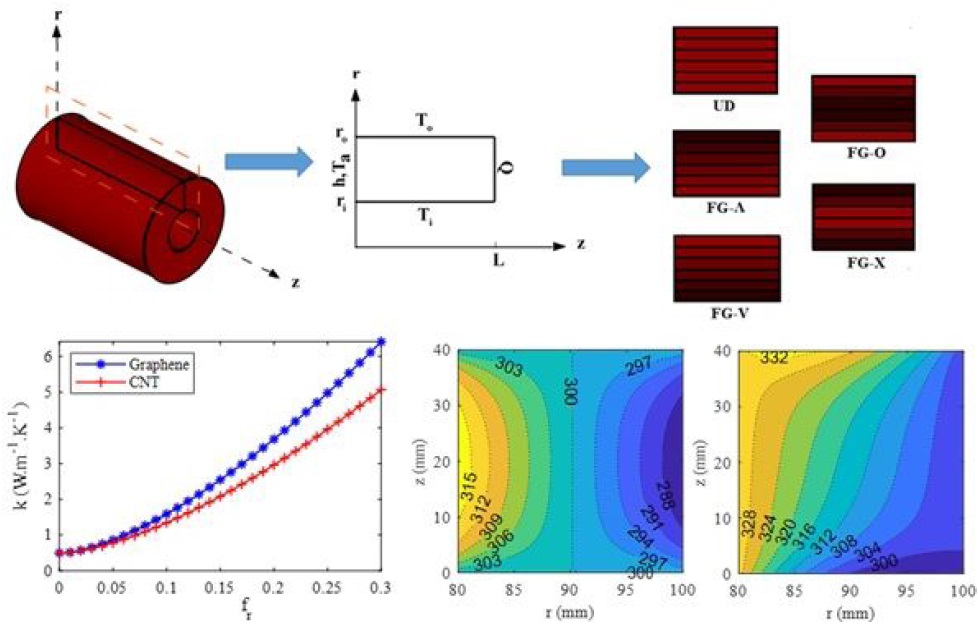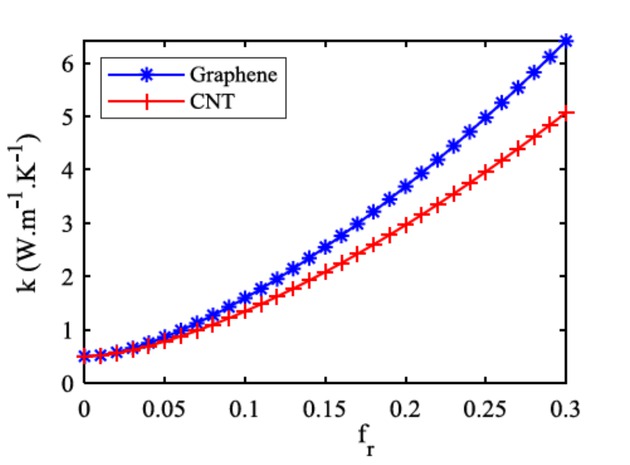There are all kinds of Graphene heating products in PMA Group, such as Graphene heated waist belt and Graphene hand massagers. Do you know why we use this material, not CNT?

Reinforcing polymers with nanofillers is an advanced approach to improve and manage the thermal behaviors of polymeric nanocomposite materials. Among the proposed nanofillers, graphene and carbon nanotube (CNT) with superior thermal conductivity are two advanced nanofillers, which have extensively been utilized to enhance the heat transfer responses of host polymeric materials. In this work, the impacts of randomly oriented graphene and CNT to steady state and transient heat transfer behaviors of functionally graded (FG) nanocomposite cylinders have been investigated using an axisymmetric model. Nanocomposite cylinders have been assumed to be under heat fluxes, heat convections or temperatures as different types of thermal boundary conditions. The thermal properties of the resulted nanocomposite materials are estimated by micromechanical model. Moreover, the governing thermal equations of axisymmetric cylinders have been analyzed using a highly consistent and reliable developed mesh-free method. This numerical method predicts temperature fields via MLS shape functions and imposes essential boundary conditions with transformation approach. The effects of nanofiller content and distribution as well as thermal boundary conditions on the heat transfer responses of nanocomposite cylinders are studied. The results indicated that the use of nanofiller resulted in shorter stationary times and higher temperature gradients in FG nanocomposite cylinders. Moreover, the use of graphene in nanocomposites had stronger impact on thermal response than CNT.

In recent decades, the use of nanocomposite structures has been growing rapidly and has attracted much attention from scientific research communities. Among the utilized nanofillers, CNT and graphene have become very popular due to their unique thermo-mechanical properties. Specifically, values of up to 3000 W/m·K and 5300 W/m·K for the thermal conductivities of CNT and graphene have been reported, respectively. Because of such extraordinary thermal behavior, these two nanofiller are excellent candidates to improve thermal conductivity of polymeric nanocomposite materials. On the other hand, it is well established that the FG dispersion of nanofiller in nanocomposite materials results in more manageable thermal-mechanical responses of nanocomposite structures.

Since thermal analysis is very critical in engineering structures, many researchers have investigated the thermal conductivity of nanocomposite materials. These materials and structures generate one of the hot topics of research in several emerging technologies and, therefore, they are being extensively investigated by researchers because of considerably improved their thermo-mechanical behaviors. Several parameters including nanofiller size, volume fraction, aspect ratio, thermal conductivity and intersection thermal resistance as well as temperature and nanofiller-matrix interface stickiness have influence on the effective thermal conductivity of nanocomposites. Highly conductive fillers, like metallic or carbon-based materials, can be added into nanocomposite cylinders to improve their thermal conductivity. Dispersion/ aggregation state and filler shape are the critical factors influencing the thermal conductivity of nanofluids and solid composites. Regarding nanofillers, the resistance of thermal interfacial is another critical factor affecting thermal transport. Researchers believe that the main factor limiting the thermal performance of suspensions and CNT composites is interfacial thermal resistance. Guetal performed some tests and proved that the use of 21.4% graphene platelets in a type of polyethylene (PE) called ultra-high molecular weight polyethylene (UHMWPE) increased the thermal conductivity of host material by up to around nine times the original UHMWPE matrix. Zabihi et al studied the effects of different types of defects on the effective thermal conductivity of nanocomposite materials reinforced with defected CNT, graphene and hybrid CNT/graphene fillers. Moheimani et al also conducted extensive research on the development of a closed-form unit cell micromechanical model for determining the effective thermal conductivities of unidirectional CNTs reinforced polymer nanocomposites.
Conclusions
In this paper, the impacts of graphene and CNT to steady state and
transient heat transfer behaviors of FG nanocomposite axisymmetric
cylinders were investigated using a mesh-free method under different
types of thermal boundary conditions. By employing a micromechanical
model, the thermal properties of nanocomposite materials were
calculated. The effects of nanofiller content and distribution as well
as thermal boundary conditions on the heat transfer behaviors of
nanocomposite cylinders were studied which resulted in the following
main conclusions:
The use of nanofiller and the increase of its amount result in shorter
stationary times such that the increase fmaxrfrmax of from 0.1 to 0.3
leads to the reduction of stationary time from 400 s to 100s.
The allocation of nanofiller close to the boundaries leads to approaching the temperatures of the nearest boundary.
The FG allocation of nanofiller intensifies temperature gradient and
thermal management of FG nanocomposite cylinders. In one case shown in
Figure 6, it was observed that Ti in V-CNT/PE cylinder was around 356 K
while in UD and ∧-CNT/PE cylinder Ti =344 K.
The use of graphene in nanocomposite has stronger impact on thermal
response than the use of CNT. Comparing Figure 6b and 7b shows that the
use of graphene leads to better conduction such that Ti in graphene/PE
cylinders is 10 K less than CNT/ PE cylinders.
